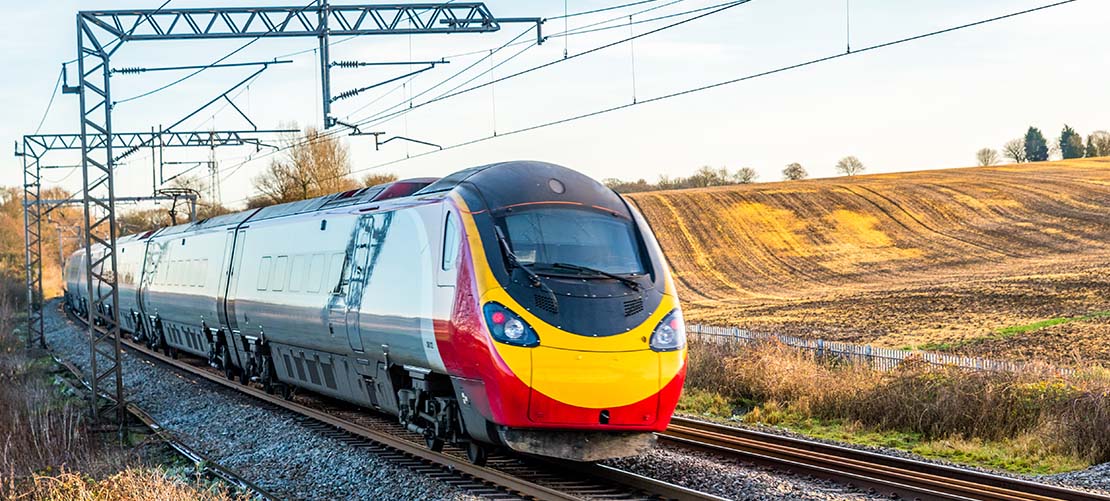Signalling the way forward: What the Hitachi and Thales provisional merger decision could mean to the rail industry in the UK

Background
In August 2021, Hitachi Rail, Ltd ("Hitachi") announced it had agreed to acquire Thales SA's Ground Transportation Systems Business ("Thales" and together with Hitachi, the "Parties") for €1.66 billion (the "Transaction"). In its press release, Hitachi outlined its plans to expand its rail signalling systems offering worldwide through the Transaction, and to become a global leader in the rail signalling market. The Transaction was conditional on the Parties receiving merger control clearance from numerous competition agencies with jurisdiction over the Transaction. As Thales' UK turnover for the financial year 2021 exceeded £70 million, it had surpassed the threshold for the UK merger control 'Turnover Test' to be met, meaning the UK Competition & Markets Authority ("CMA") was one such regulator with jurisdiction to review the Transaction. As a result, despite provisionally expecting the Transaction to close in late 2022, the Parties were instead the recipients of a formal Commencement Notice from the CMA on 14 October 2022, in which the CMA confirmed it had launched a Phase I merger review of the Transaction. Finding that the Transaction may result in a 'substantial lessening of competition' ("SLC") in both mainline and urban rail signalling – meaning that, as a result of the Transaction, competition between participants in these markets would be reduced to such an extent that end-users and ultimately consumers would be harmed – the CMA referred the Transaction to an in-depth Phase II merger review on 23 December 2022, after the Parties opted not to offer any undertakings to the CMA to address the regulator's concerns. On 8 June 2023, the CMA released the provisional findings of its Phase II review.
What did the CMA find?
In its Phase II Provisional Findings Report, the CMA held that the Transaction may be expected to result in an SLC in two key markets in which the Parties overlap:
- The supply of digital mainline signalling systems and related services in Great Britain ("GB"); and
- The supply of communications-based train control signalling systems and related services ("CBTC systems") in the UK
In reaching this verdict, the CMA referred to a 2021 market study conducted by the Office of Rail and Road ("ORR"), which recommended that the number of signalling suppliers in the UK should be increased. This study was subsequently reflected in the design of Network Rail's Train Control Systems Framework ("TCSF"), which aims to select four different suppliers for future projects in digital mainline signalling. In respect of the first area of overlap, although Siemens was found to hold over 90% of the contracts in GB, the CMA nonetheless considered the Parties to be credible competitors – both for Siemens and each other – for contracts under the TCSF as the second (Thales) and fourth (Hitachi) largest suppliers of digital mainline signalling in Europe, with a combined share of supply of 40-50% post-Transaction. The Parties' experience of delivering projects across Europe thus gave them a significant advantage compared to other competitors not currently active in the GB market seeking to enter and expand into it. Only Siemens and to a much lesser extent Alstom were considered to be strong competitors with the Parties for the TCSF – a fact conceded in the Parties' internal documents – and only CAF, who itself had less than a 5% share of supply in Europe, was considered capable of exercising some other competitive constraint on the Parties, albeit one much weaker than that which the Parties could impose on each other. Therefore, the Transaction would result in the loss of a credible supplier and intensity of competition for the TCSF tender, leading to reduced choice for Network Rail relative to the position absent the Transaction.
In its assessment of the second area of overlap, the CMA focussed on the tender for the re-signalling of the Piccadilly and Bakerloo underground lines due by 2035 owing to the limited number of CBTC systems projects expected over the next decade in the UK. In this tender, technological capabilities, experience on comparable projects, local knowledge of London Underground systems, and price were all identified by the CMA to be key areas of competition amongst prospective suppliers. Thales' status as one of only two suppliers (the other being Siemens) with experience delivering CBTC projects on the London Underground – and thus familiarity with the network's complexity – was deemed to give it a significant competitive advantage, while Hitachi's experience as one of a further two firms (the other again being Alstom) with experience delivering CBTC systems in Europe making it a potential credible (albeit not the strongest) competitor for future CBTC tenders in the London Underground absent the Transaction. With other CBTC suppliers such as Stadler and Mitsubishi only recently developing their CBTC service offerings, the CMA again found that the remaining constraints from Siemens and Alstom as the sole viable competitors would be insufficient to offset the loss of competition as a result of the Transaction, resulting in higher prices, reduced innovation and reduced performance relative to pre-Transaction conditions.
What are the possible remedies the CMA may look to implement?
In its Notice of Possible Remedies, published the same day as its provisional findings, the CMA set out the actions it could take to remedy the SLCs identified in its provisional assessment of the Transaction. Typically, the CMA has three different remedies it may look to impose – prohibition of a merger; divestiture of part or all of one party's business which overlaps with the other party's; and behavioural remedies, which do not usually address the underlying causes of the competition concerns by altering the structure of the deal, but rather manage market outcomes by controlling the behaviour of the merged entity post-completion for a period of time. Perhaps unsurprisingly, the CMA generally prefers structural remedies (i.e. prohibition or divestment), as they do not require ongoing monitoring and enforcement, and can directly address any SLCs by restoring the merging parties' pre-transaction rivalry. This tendency was reflected in the CMA's remedies notice, as only an outright prohibition of the Transaction, which would see the Parties return to their pre-Transaction separate ownership as independent competitors, or perhaps a divestment of either Thales or Hitachi's UK digital mainline CBTC systems were considered to be capable of addressing its concerns.
In assessing the potential scope and structure of any divestiture, the CMA will look to identify the smallest viable business that can successfully compete independently in the markets in which the merging parties overlap on an ongoing basis. In theory, a divestment including the UK digital mainline signalling systems or CBTC systems of either Hitachi or Thales could provide possible solutions to the CMA's concerns. However, the CMA's findings revealed that these operations of the Parties form part of their larger global businesses, with intellectual property, staff, and capabilities shared between the UK and worldwide operations. Any divestment package comprising the UK or GB operations would therefore need to be 'carved out' of the Parties' larger global businesses, an act which would pose significant risks in and of itself in relation to the identification of assets to be carved out, the allocation of those assets between UK and non-UK operations and the transfer of them to a divestiture business. Any such divestiture business would also lack the international experience that the CMA highlighted in its provisional findings as being key to competing effectively for tenders. Similarly, the CMA understood that the two signalling services themselves from each of the Parties were potentially interdependent, meaning any divestiture should comprise a single package with all assets from one of Hitachi or Thales, rather than components of the divisions from each of them. These effectiveness risks, coupled with the challenges of identifying a suitable purchaser that was independent of the Parties, willing and able to compete in both markets, and would not create further competition concerns, meant divestment would be a difficult – but admittedly not impossible – remedy to implement.
While doubt remained in the CMA's perspective on the viability of divestment as a potential remedy, its stance on implementing behavioural remedies is far more clear-cut. Simply, the CMA found it was not possible to specify with the necessary precision what conduct or market outcome would be required to address the SLCs it had identified for any behavioural remedies to be deemed effective. When assessing which remedy to impose, the CMA will often opt for the least costly option, in terms of potential distortions in market outcomes, compliance and monitoring costs – whether incurred by the Parties, third parties or CMA itself – and the loss of any 'relevant customer benefits' – such as lower prices, greater innovation and higher quality or choice of services – which may be lost should a particular remedy be selected. As a result, owing to the complexity of any potential divestment, and the apparent inadequacy of any behavioural remedies, prohibition appears to be the simplest and most likely remedy for the CMA's concerns. The CMA has nonetheless invited any interest parties to provide their views and make representations on possible remedies by 5pm on 22 June 2023, and on its provisional findings by 5pm on 29 June 2023.
What does this mean for the rail industry?
The CMA's findings are of course provisional in nature, and thus could be subject to change should it be presented with evidence that compels it to do so. Either way, the Parties will not have long to wait to learn the regulator's ultimate stance, with the statutory deadline for a final decision being 11 August 2023. Should the Transaction be prohibited however, or subjected to significant divestiture obligations, the market conditions will return to those seen pre-Transaction, with Thales and Hitachi competing against one another for tenders, and the TCSF will have the four credible competitors to choose from that it seeks – Siemens, Hitachi, Thales and Alstom – along with any other lesser-known players seeking to enter the market from Europe. As such, Thales would likely remain the best placed to secure the Piccadilly and Bakerloo line tender, currently being the main provider of signalling systems to London Underground, and the Parties would be hard-challenged to compete with Siemens, as the dominant player in the market – and against each other – for future digital mainline signalling projects.




